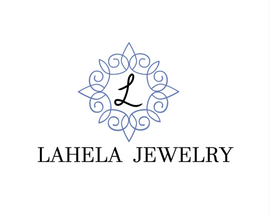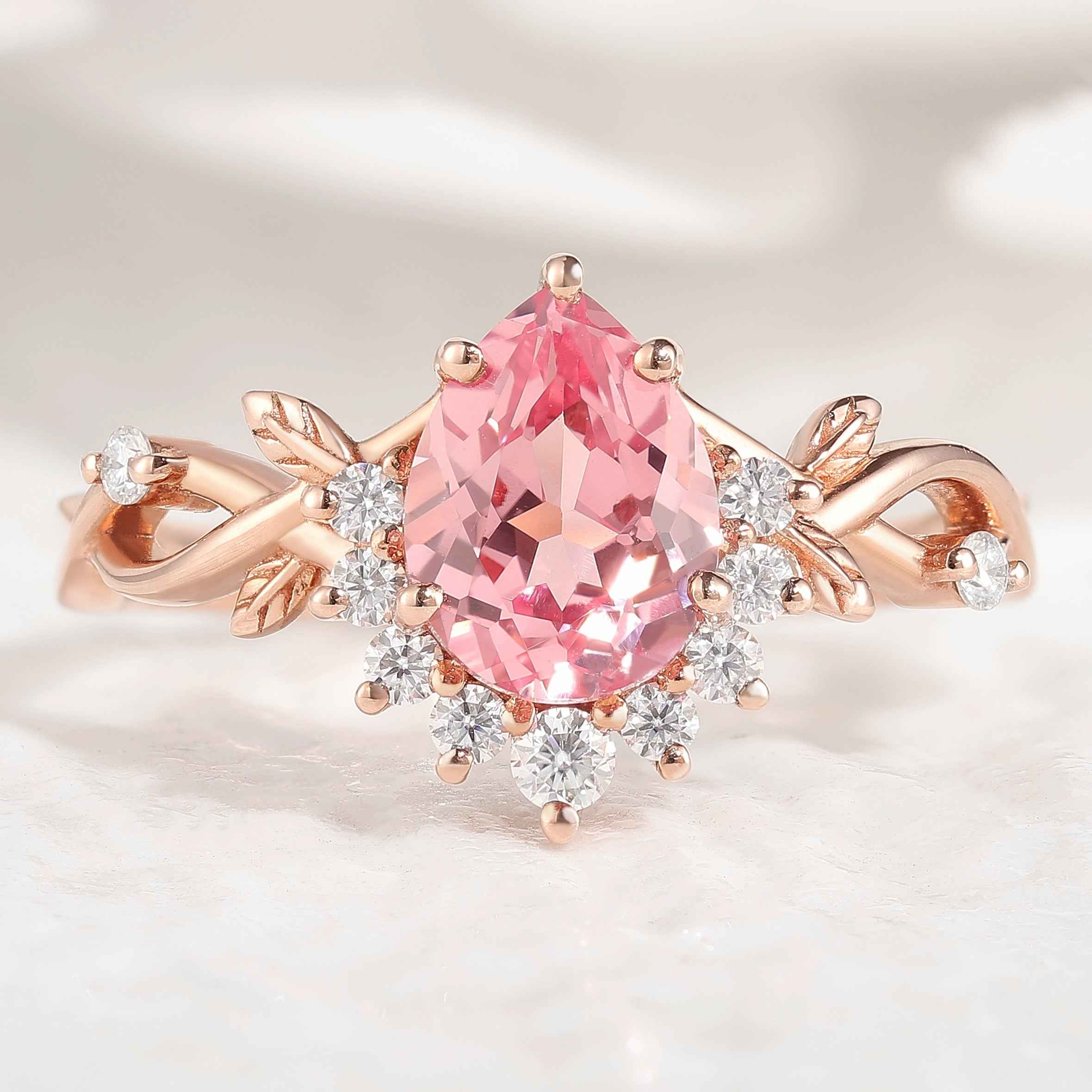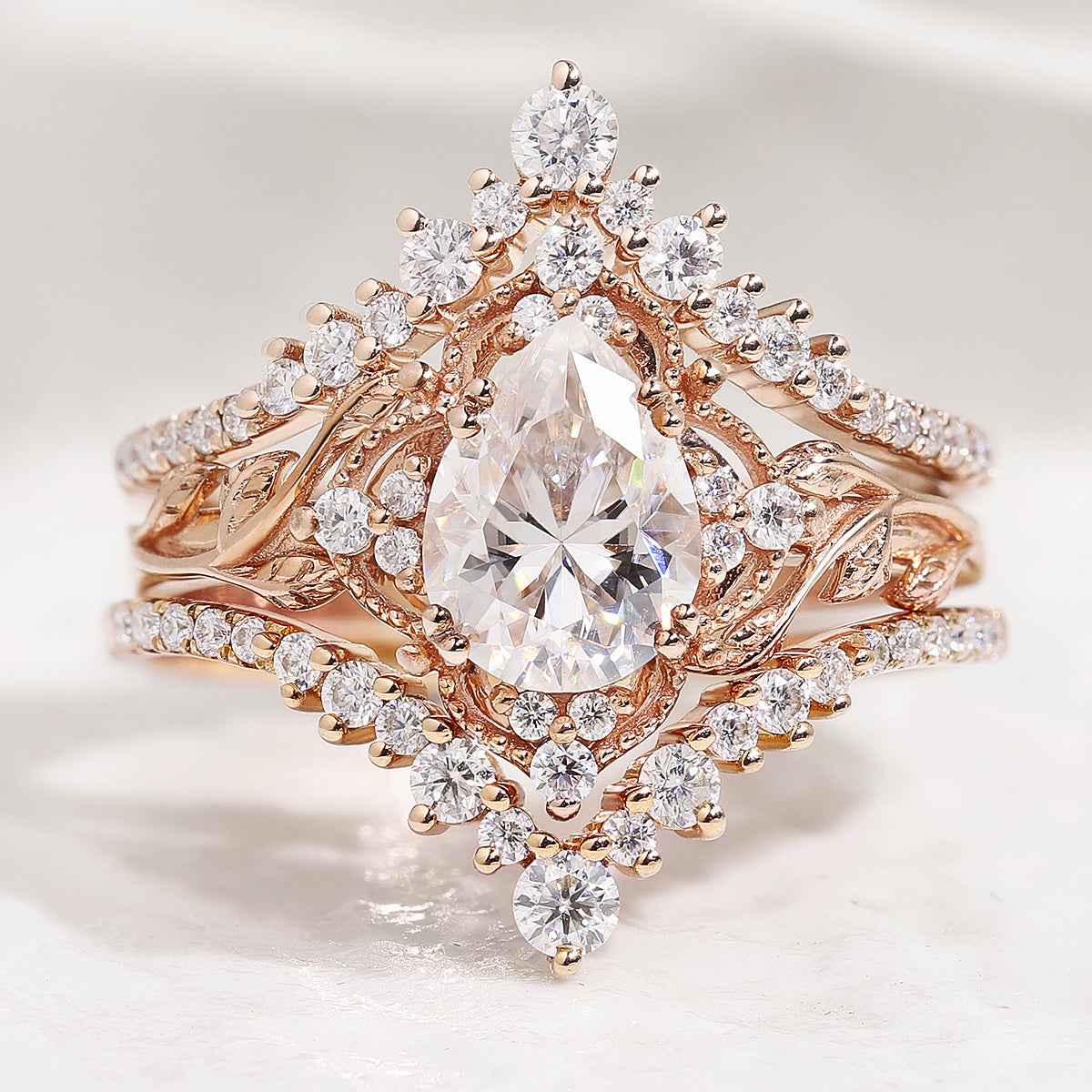Key Takeaway
Lab-grown diamonds are actual diamonds, just as beautiful and long-lasting as earth-mined diamonds, but with some extra advantages: ethical origin, less environmental footprint, and better prices. They're perfect for consumers who appreciate transparency, sustainability, and fashion—whether you're looking for a traditional engagement ring or a modern twist like a sapphire engagement ring.
You've probably heard about lab-grown diamonds, but what are they, really? Simply put, they are not fakes or imitations—they are 100% real diamonds, just created by science instead of by nature. This modern option has quickly become popular, leaving many buyers with questions. Is there a catch? We'll get straight to the point, explaining how they compare to mined diamonds and laying out the pros and cons to help you decide if one is right for you.
What Are Lab-Grown Diamonds?
Lab-grown diamonds, also called cultivated or engineered diamonds, are genuine diamonds created in a laboratory setting. They possess the exact same chemical composition, crystal structure, optical, and physical properties as natural diamonds. The only difference is their origin: one comes from the earth, and the other from a controlled environment. These diamonds are graded using the same 4Cs—cut, color, clarity, and carat—as natural diamonds. Think of it like ice from your freezer versus ice from a glacier – both are ice, just formed differently.
Lab-Grown vs. Natural Diamonds: Key Differences
Though Lab-grown diamonds are nearly identical to natural diamonds in appearance and structure, there are a few important differences:
| Feature | Lab-Grown Diamond | Natural Diamond |
| Origin | Created in a lab | Formed naturally in the earth |
| Time to Create | Weeks to months | Billions of years |
| Environmental Impact | Lower | Higher (due to mining) |
| Ethical Concerns | Minimal | Possible (conflict diamonds) |
| Price | 20–40% less expensive | More expensive |
| Resale Value | Lower | Higher |
| Customization | More options for size and color | Limited by nature |
How Are Lab Diamonds Made?
Two main methods are used to create lab diamonds: High Pressure High Temperature (HPHT) and Chemical Vapor Deposition (CVD). This also helps explain why they are so similar to natural diamonds.
HPHT: Mimicking Nature's Pressure and Heat
The HPHT process begins with a small diamond seed placed in a chamber filled with carbon. The chamber is subjected to high temperature (above 2,700°F) and pressure (as much as 6 gigapascals), mimicking the conditions that exist deep within the earth where natural diamonds are found. The carbon melts and bonds to the seed and develops into a mature diamond over several weeks.
CVD: Building Diamonds Layer by Layer
CVD is a more modern technique. A diamond seed is placed in a vacuum chamber filled with carbon-rich gases, like methane. The gases are heated using microwaves or lasers, breaking them down and allowing carbon atoms to settle onto the seed. As the carbon atoms deposit onto the seed, the diamond grows horizontally in layers. The growth rate is carefully controlled to produce high-quality crystals. This method is particularly versatile, allowing for the creation of various diamond shapes and sizes.
Both methods produce diamonds that are virtually identical to those found in nature, but in a fraction of the time.
| Feature | HPHT (High Pressure High Temperature) | CVD (Chemical Vapor Deposition) |
| Starting Material | Diamond seed + carbon | Diamond seed + carbon-rich gases (e.g., methane) |
| Process Environment | High pressure (up to 6 GPa), high temperature (>2,700°F) | Vacuum chamber, moderate temperature |
| Growth Direction | Grows outward from seed | Grows layer by layer (horizontally) |
| Time to Grow | Several weeks | Several weeks |
| Equipment Used | Pressurized chamber | Vacuum chamber with microwaves or lasers |
| Versatility | Best for certain shapes and sizes | Allows various shapes and sizes |
| Key Advantage | Mimics natural formation conditions | Greater control over size and quality |
Pros of Lab-Grown Diamonds: Why More People Choose Them
Lab-created diamonds have several practical advantages that make them a hit for consumers today. Here's what makes them special:
- Ethical Sourcing: Lab-created diamonds are conflict-free, and their supply chains are transparent. You can wear your jewelry knowing that it was not associated with unethical mining.
- Less Environmental Footprint: Creating a lab-created diamond requires much fewer resources compared to mining. For instance, lab-created diamonds consume much less water and energy, and produce less waste.
- Cost Efficiency: Cultured diamonds are 20–40% less expensive than comparable-quality mined diamonds, allowing luxury to be affordable.
- Customization: Labs can grow diamonds in a wide range of shapes, sizes, and even colors, giving you more options for unique jewelry designs.
- Quality and Beauty: Lab-created diamonds are certified by well-known organizations such as GIA and IGI, maintaining best-in-class quality in cut, color, clarity, and carat.
- Trendy and Modern: Lab-grown diamonds are now featured in everything from classic solitaires to bold sapphire engagement rings and celebrity red-carpet looks.
Cons of Lab-Grown Diamonds: What to Consider Before Buying
Although lab-grown diamonds have numerous benefits, it's worth examining the downsides:
- Resale Value: Lab diamonds have less resale value than natural diamonds. The market for pre-owned lab diamonds is not fully developed yet, so they might not retain their price as effectively.
- Energy Use: Although mining is sidestepped, the production process—especially HPHT—can be energy-intensive. Some labs now use renewable energy to counteract this concern.
- Perceived Value: Some traditionalists and collectors like natural diamonds due to their history and rarity.
- Market Trends: As technology improves and supply increases, prices for cultured diamonds have decreased, which can impact long-term value.
- Limited Investment Value: Lab-created diamonds are ideal for personal use but not for investment.
Lab-grown diamonds are increasingly popular due to their ethical sourcing, lower environmental impact, affordability, and quality, offering a modern alternative to mined stones. While they have downsides such as lower resale value and some production energy concerns, many buyers ultimately weigh these against the core question: are affordable lab diamonds worth it for their specific needs and priorities?
How to Buy Lab-Grown Diamonds: Practical Shopping Tips
Purchasing a lab-created diamond is not very different from purchasing a natural diamond, but with some additional factors to consider. Here's a Lab-Grown Diamonds Guide for buyers:
Certification Counts
Always go for diamonds certified by well-known laboratories such as GIA or IGI. This way, you are aware of the quality and authenticity of your stone.
Put the 4Cs first
Cut, color, clarity, and carat remain what makes a diamond valuable and beautiful. Go for at least F color and VS clarity for a stone that will truly shine.
Compare Prices
Lab-created diamonds offer a wide price range. Compare options to achieve the maximum score for your budget.
Inquire About the Production Method
Some buyers are keen on diamonds developed with renewable energy or particular growth methods (HPHT or CVD).
Consider Style Trends
Lab diamonds come in all popular ring styles—solitaire, halo, three-stone, and others. They also complement colored stones, like sapphire engagement rings.
Work With a Reputable Jeweler
Select a jeweler who is open about grading and sourcing and can address your inquiries regarding lab-created diamonds.
FAQs about Lab-Grown Diamonds
Q1: Are lab-grown diamonds "real" diamonds?
Yes, absolutely. Lab-grown diamonds are chemically, physically, and optically identical to natural diamonds. They are not simulants like cubic zirconia or moissanite, which only look similar but have different compositions.
Q2: Do lab-grown diamonds last as long as natural diamonds?
Yes, they do. Since their composition is identical, lab-grown diamonds are just as hard and durable as natural diamonds. They will last forever and are perfect for everyday wear in jewelry like engagement rings.
Q3: Can jewelers tell the difference between lab-grown and natural diamonds?
Most jewelers cannot tell the difference with the naked eye or standard magnification. Specialized equipment is needed to identify the microscopic growth patterns unique to either lab-grown or natural diamonds. All reputable lab-grown diamonds come with a grading report clearly stating their origin.
Q4: What is the environmental impact of lab-grown diamonds compared to mined diamonds?
Lab-grown diamonds generally have a significantly smaller environmental footprint than mined diamonds. They require less land, water, and energy overall. The industry is also moving towards using more renewable energy sources to make production even more sustainable.
Q5: What is the price difference between lab-grown and natural diamonds?
Lab-grown diamonds are typically 20-40% less expensive than natural diamonds of comparable size and quality. This allows consumers to purchase a larger or higher-quality stone for their budget.
Lab-grown diamonds are a modern, responsible, and beautiful choice for today's jewelry lovers. Use this Lab-Grown Diamonds Guide to make your next purchase with confidence, whether you're drawn to classic diamond studs or the unique look of sapphire engagement rings.


